Oracle11gORA-609TNS12537TNS12560
alert_sid.log中有如下报错信息
Wed Dec 18 08:25:58 2013***********************************************************************Fatal NI connect error 12537, connecting to: (LOCAL=NO) VERSION INFORMATION: TNS for Linux: Version 11.2.0.1.0 - Production Oracle Bequeath NT Protocol Adapter for Linux: Version 11.2.0.1.0 - Production TCP/IP NT Protocol Adapter for Linux: Version 11.2.0.1.0 - Production Time: 18-DEC-2013 08:25:58 Tracing not turned on. Tns error struct: ns main err code: 12537 TNS-12537: TNS:connection closed ns secondary err code: 12560 nt main err code: 0 nt secondary err code: 0 nt OS err code: 0opiodr aborting process unknown ospid (16596) as a result of ORA-609Wed Dec 18 08:28:25 2013Thread 1 advanced to log sequence 22477 (LGWR switch)
MOS给出的解决方法
It can be somewhat challenging to determine the origin of the client that is causing the error.
For that reason, we often recommend increasing the values for INBOUND_CONNECT_TIMEOUT at both listener and server side sqlnet.ora file as a preventive measure. If the problem is due to connection timeouts, an increase in the following parameters should eliminate or reduce the occurrence of the ORA-609s.
e.g.Sqlnet.ora: SQLNET.INBOUND_CONNECT_TIMEOUT=180
Listener.ora: INBOUND_CONNECT_TIMEOUT_listener_name=120
These settings are in seconds. Again, the default is 60. A setting of 120 seconds should resolve most if not all ORA-609 errors.
As explained in the Cause section, The ORA-609 error is thrown when a client connection of any kind failed to complete or aborted the connection process, so ORA-609 and TNS- errors are expected while shutting down the database - as client connection will fail to complete or aborted the connection process before the connection/authentication process was complete. So please ignore the ORA-609 and TNS- errors, if these are appear while database instance is shutting down.
If the issue persists and inbound connect does not have any effect, the following steps are intended to help locate the client that may be causing the errors.
1) Suppress the TNS errors in the alert.log by setting the following sqlnet.ora file parameter:
sqlnet.ora file (on the server): DIAG_ADR_ENABLED = OFF
Reload the listener following this change.
This will cause the TNS errors to be posted to the ORACLE_HOME/network/log/sqlnet.log file that is local to the database and may yield useful information about the client's address.
For example, here's a snippet from a server side sqlnet.log where client address info was posted:
Fatal NI connect error 12537, connecting to:
(DESCRIPTION=(ADDRESS=(PROTOCOL=TCP)(Host=yourhost)(Port=1521))(CONNECT_DATA=(SID=PROD1DR)(CID=(PROGRAM=sqlplus)(HOST=client_host)(USER=client))))
Observe the PROGRAM and HOST fields on the last line. This is where the connection originated.
Be sure to match timestamps in the sqlnet.log with the timestamps of the alert.log errors. Once you've located the offending client, you can enable client tracing to try and determine the cause:
TRACE_LEVEL_CLIENT=16
TRACE_DIRECTORY_CLIENT=<dir location>
TRACE_TIMESTAMP_CLIENT=TRUE
DIAG_ADR_ENABLED=off <<<
If you need assistance with client or server tracing, please open an SR with Global Customer Support.
2) Check the listener.log for client connections that were logged at timestamps that match the ORA-609 timestamps as they appear in the alert.log. The client information is recorded in each listener.log entry. Since this error occurs AFTER the listener has handled the connection, do not expect to see errors in the listener.log.
Here's an example snippet of an incoming client connection that was posted to the listener.log:
Note that the exact timestamp, program name and client host will often be recorded. Again, once you've located the offending client, enable tracing (see above) to try to capture the connection failure.
3) Enable server side Oracle Net tracing and capture the TNS error along with the incoming connection.
Match the PID that accompanies the ORA-609 to the server trace label. e.g.
ORA-609 : opiodr aborting process unknown ospid (4799_1) *Note the PID
This PID would correspond to server trace labeled: svr_4799.trc. Check the server trace for either TNS error (the 609 will not appear) and try to locate the originating client address. If assistance is needed for this investigation, please open an SR with Oracle Support.
See below for instuctions on enabling Oracle Net server tracing.
The following details the discovery of the source of an ORA-609 for a real case:
The alert.log reports the following messages intermittently but frequently:
Mon Nov 16 22:39:22 2009ORA-609 : opiodr aborting process unknown ospid (nnnn)
Enabled Oracle Net server tracing:
TRACE_LEVEL_SERVER=16
TRACE_DIRECTORY_SERVER=<dir location>
TRACE_TIMESTAMP_SERVER=TRUE
DIAG_ADR_ENABLED=off
Reloaded listener and wait for error to appear again.:
ORA-609 : opiodr aborting process unknown ospid (5233_1)
Note that the server trace file set that corresponded to this event was named svr_5233*.trc.
Of course the timestamps of the alert.log event and the server trace creation matched as well.
A review of the server trace showed only an EOF failure and the TNS-12537 error:
nserror: nsres: id=0, op=68, ns=12537
In this particular case, there was no information about the client in the trace. This is atypical for a server trace. It may be that the client aborted before all the client information was posted to the file. However, there was post in the listener.log for an emagent connection that was established at the same point in time.
Here's an excerpt from a listener.log entry where an emagent establishes a connection:
Checked the EM Agent traces and logs and discovered the following entry:
(LOCAL=NO)
VERSION INFORMATION:
TNS for Solaris: Version 11.1.0.7.0 - Production
Oracle Bequeath NT Protocol Adapter for Solaris: Version 11.1.0.7.0 - Production
TCP/IP NT Protocol Adapter for Solaris: Version 11.1.0.7.0 - Production
Time: 16-NOV-2009 22:39:22
****Tracing to file: /backup/sid_traces/sqlnetlog/svr_5233.trc
Tns error struct:
ns main err code: 12547
TNS-12547: TNS:lost contact
ns secondary err code: 12560
nt main err code: 0
nt secondary err code: 0
nt OS err code: 0
****Note the name of the server trace which contains the PID: svr_5233.trc
Also, the timestamp of the agent event matches the timestamp of the alert.log error.
- 01-11全球最受赞誉公司揭晓:苹果连续九年第一
- 12-09罗伯特·莫里斯:让黑客真正变黑
- 12-09谁闯入了中国网络?揭秘美国绝密黑客小组TA
- 12-09警示:iOS6 惊现“闪退”BUG
- 04-21中国产品数字护照体系加速建设
- 04-21上海口岸汽车出口突破50万辆
- 04-21外媒:微软囤货GPU以发展AI
- 04-21苹果手表MicroLED项目停滞持续波及供应链
- 04-21三部门:到2024年末IPv6活跃用户数达到8亿

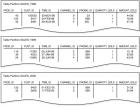
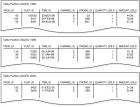
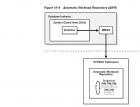
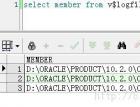

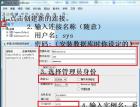
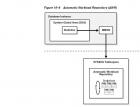


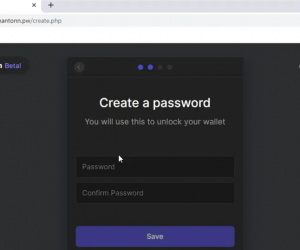






 粤公网安备 44060402001498号
粤公网安备 44060402001498号